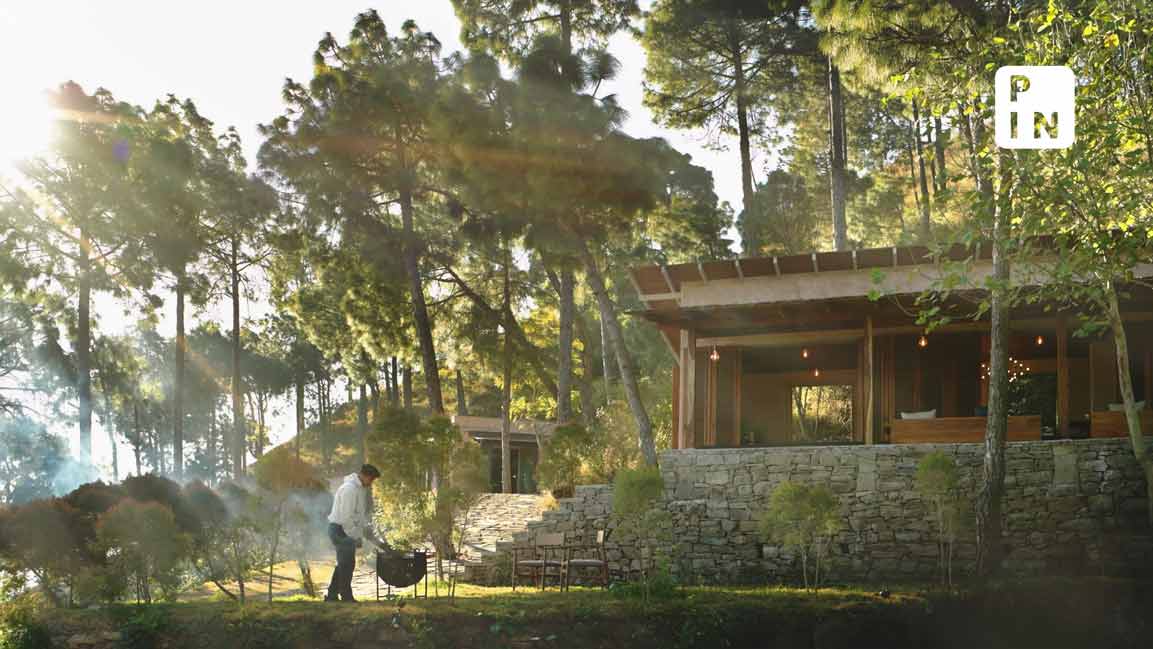- | 3:23 pm
Restoring the Himalayas, one plastic wrapper at a time
Nestled in Himachal Pradesh, a serene mountain hamlet is in a fight for its survival. Chitkul, as quaint as it is, stands at the front line of a battle against the scourge of plastic waste

Chitkul village, snuggled in the lush green alpine forests on the banks of the glacial Baspa River, in Himachal Pradesh, was unknown to most Indians until the 1990s, as security restrictions following the 1962 India-China war kept the region cut off. As the civilian constraints eased and road connectivity improved, millions of tourists now flock to this region.
The rise in tourism has brought fame to Chitkul as the last village on the Indo-China border, but it has also left behind a significant amount of plastic waste, a problem hitherto unknown in this high-altitude region.
Away from prying eyes, empty packets of chips, chocolate, Maggi wrappers, plastic bottles, beer cans, and layers of discarded plastic lie dumped in an open ground near the village entrance. In the distance, tourists with selfie sticks pose against the backdrop of the blue sky and the majestic Himalayan range. Approximately 2 tonnes (2000 kg) of non-recyclable trash accumulates in Chitkul each year.
The village serves as a microcosm of the staggering problem of waste management and plastic pollution spread across the Indian Himalayan Region that no one quite knows how to clean up.
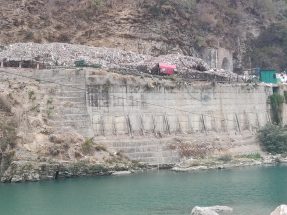
Waste dump in Himalayas (Picture Courtesy: Waste Warriors)
Healing Himalayas: On a mission to clean the mountains
“It’s awful to see tourists traveling so far to Chitkul only to mindlessly dump plastic behind,” says Pradeep Sangwan, an environmental activist and the founder of Healing Himalayas, a non-profit organization dedicated to the monumental mission of purging the pristine mountain ranges from the scourge of waste.
Data from the United Nations Environment Programme showed 430 mt of plastics are produced globally each year, with 36% being used as packaging material for food and beverage containers.
In the past six years, Sangwan and his team of motivated volunteers have cleared approximately 800 tonnes of waste from locations popular with tourists and pilgrims across Himachal Pradesh.
During the first clean-up drive that Sangwan had organized in Chitkul in 2020, volunteers collected hundreds of bags filled with non-biodegradable and recyclable trash. “Then came the existential question: where to dispose these?” Sangwan recalls the difficulties involved in the task of waste collection in the remote highlands.
“There are no places in between the villages to manage the garbage and we couldn’t leave the trash in another location. So, we drove 250 km down to Shimla, the main town of Himachal Pradesh which has solid waste disposal facilities.”
Recycling as a solution
The time-consuming and carbon-intensive nature of this effort prompted Sangwan to seek decentralized options for addressing waste at its source. As a solution, he built a material recovery facility or recycling unit, 10 km away in Rackham village, to collect, segregate and process the non-biodegradable waste generated by tourists and local communities.
“It took us about a year to transform a single village, from sensitizing the locals, persuading them to segregate the garbage, building a recycling hub, and training waste collectors,” says Sangwan about the investment it took to establish a sustainable waste recycling ecosystem.
Healing Himalayas has set up five such material recovery facilities in areas with high tourist footfall, where up to 5 tonnes of garbage are collected daily. “By recycling this trash, we are preventing it from getting dumped in the landfill or in the river streams or burned in the open air,” Sangwan asserts.
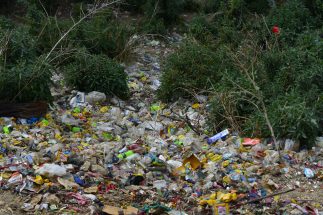
Local dumpsite in Uttarkashi (Picture Courtesy: Waste Warriors)
Maggi wrappers to undergarments, what tourists dump
While recycling initiatives like these are essential, they only scratch the surface of the waste generated in mountainous areas. The Indian Himalayan Region, stretching across 2500 km and spanning 13 states with a population of nearly 50 million, produces more than 5 to 8 million metric tons of waste annually. The government estimates under the Swachh Bharat Abhiyan (Clean India Mission) show that only 24% of this waste is processed across states in the Himalayas.
Rapid urbanization, changing consumption patterns, and increased tourism have added unprecedented stress to mountain areas, which are ill-prepared to handle the massive influx of tourists. It is estimated that around 100 million people visit the Himalayas each year, often spreading to sparsely inhabited and remote expedition sites. This type of tourism generates a substantial amount of waste left behind by trekkers and pilgrims.
Himachal Pradesh recognized the plastic problem as early as 1995 when it became the first state to impose a ban on non-biodegradable materials, says Satpal Dhiman, additional secretary of environment, science, and technology from the Himachal Pradesh government. Despite subsequent regulations and legislations, the plastic problem persists. “Wherever humans go, plastic goes with them. The change against littering has to come from people,” he laments.
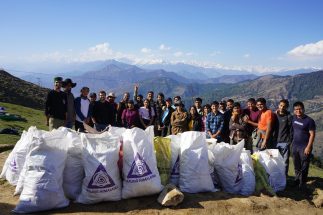
A team of Healing Himalayas volunteers collecting waste left behind by tourists in Himachal Pradesh (Picture Courtesy: Healing Himalayas)
The callousness of some tourists and the lack of waste management services have sullied almost every tourist spot and trekking site in the pristine Himalayan landscape with plastic. “If you are a novice trekker, just follow the plastic littering and you will reach the destination,” Sangwan recalls the advice he received a decade ago from the locals. It still holds true.
He faced this harsh reality on a trek to Manimahesh Lake, a pilgrim site located 4,080 meters in the Chamba district of Himachal Pradesh, where thousands of pilgrims take a dip in the holy water. Sangwan was shocked to see heaps of plastic raincoats, broken umbrellas, and undergarments collected at the edge of the lake. The same situation existed at Kheer Ganga hot springs, another popular pilgrim spot in the Parvati valley, where regular clean-up drives have failed to induce behavioral change among tourists.
Mobilizing communities for clean-up efforts
Vishal Kumar, head of the non-profit organization Waste Warriors, which operates in 10 locations across Himachal Pradesh and Uttarakhand, warns that the garbage at these sites is only the tip of the iceberg. “Most trash is typically hidden behind in the forest areas, where normally tourists don’t venture. The rest is dumped or burnt.”
His team members recently caught a truck dumping waste at a site adjoining a river stream near Musoorie’s Kempty waterfalls. “A huge quantity of this waste eventually ends up deep in the forest and flows down waterways, endangering wildlife and ecology,” he says.
To address this issue and mitigate human-animal conflict and socio-environmental problems, Waste Warriors focuses on wildlife sanctuaries and villages near tourist sites, areas often neglected in solid waste management strategies. The organization involves the community, mobilizing local women as eco-warriors or paryavaran sakhis (friends of the environment), to take charge of the clean-up efforts. These women earn incomes by selling recyclable waste. However, this uphill task comes with its own set of challenges.
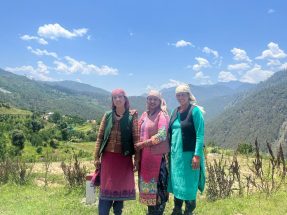
Ganita Devi (center) flanked by Janita (left) and Pashmina (right) (Picture Courtesy: Waste Warriors)
Ganita Devi, a community worker with Waste Warriors, undertakes a three-hour climb from her house in Dewra village to collect dry waste from 80 scattered households on the outskirts of Gaichwan village, located in the Govind wildlife sanctuary in Uttarakhand’s western Himalayan region. She makes this arduous journey three times a week, carrying up to 35 kg of waste each time. The physical labor, especially during bad weather conditions and the winter season, is taxing. However, the most challenging aspect of her job is convincing villagers to segregate waste.
“We used to simply throw waste in the backyard or trenches, so there is a lot of resistance from the villagers to segregate and hand over the waste to us,” she says.
She emphasizes the urgency of recycling waste as the only way to protect the environment and domestic animals, and maintain a disease-free village. The cows left for grazing often ingest plastic, leading to their death.
Devi and two other women, Janita Rangad and Pashmina Devi, involved in waste collection and segregation in Gaichwan, were also ostracized by the villagers. The taunting comments from relatives and neighbors were hurtful in the beginning, but the women chose to ignore them in their desire to transform their village.
Dharmendra Negi, 39, in charge of sorting the waste at the recycling facility in Rakcham village, also faced similar treatment. “The worst comment was from my father. He asked me why I was spending my time picking up other people’s garbage,” Negi recalls.
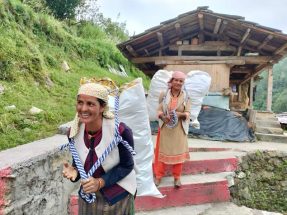
Woman workers collecting waste in an Uttarakhand town (Picture Courtesy: Waste Warriors)
The involvement of local communities, who mainly belong to upper castes or from mountain tribes, has been pivotal in breaking rigid caste barriers which have historically tied down the lowest castes with the occupation of dealing with waste. “Collaboration with the local communities is the only way forward to sustain these operations, and it involves participation from everyone,” says Kumar.
Hailing from a patriarchal society, the women have additionally shown a remarkable commitment to the cause of waste collection by breaking gender-based restrictions, he adds. “Their work is recognized by the local administration and has elevated their status in the village. It has given them an identity and respect.”
Sangwan hopes that in rural areas, villagers will develop a sense of pride toward waste management facilities, similar to their attitude toward schools, hospitals, and temples. “Only when they take upon the responsibility of managing the waste, they can keep the village plastic-free and clean in the long run.”
Negi, who underwent a six-month training program in waste segregation and recycling with Healing Himalayas, has found a sense of purpose in his job.
“The open-air dumping ground was creating a stench and spoiling the beauty of my village. Now, I tell people to not dump trash anywhere. I go and collect it from their houses and segregate it at the facility,” he says.
With a smile, he adds, “I tell my father that I pick up garbage because I want to make Rakcham the most beautiful village in India.”






